Population survey reveals increasing number of black-necked cranes in Xizang
Updated: 2023-11-30 By Palden Nyima and Daqiong in Lhasa (chinadaily.com.cn)  Print
Print 


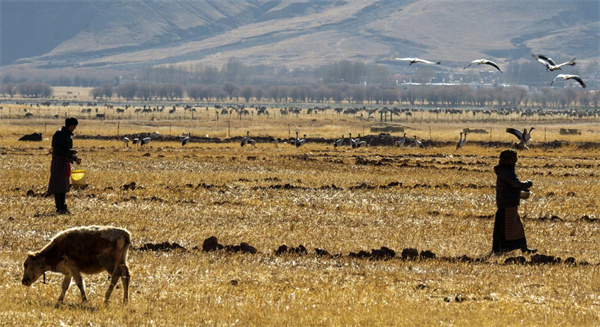
Villagers feed black-necked cranes in their village in Lhundrub county of the Xizang autonomous region. [Photo by Tadon/For chinadaily.com.cn]
In an ongoing conservation effort, the Xizang autonomous region has ramped up its measures to protect the habitat of the black-necked crane, resulting in a dramatic increase in the species' population, People's Daily reported.
A winter population survey conducted in 2022 reported a significant increase in the number of black-necked cranes that choose Xizang as their wintering grounds, with a staggering count of 11,175 cranes. The population continues to flourish, with their presence now spanning the entire region.
According to the wildlife and wetland resources management office of the region's forestry and grassland bureau, several essential breeding grounds for black-necked cranes in the area, including Mount Everest, the Changthang grassland, Silingtso Lake, Lake Manasarovar, and the Maidika marshes, have been designated as national-level nature reserves. Furthermore, Silingtso Lake, Lake Manasarovar, the Maidika marshes, and Dzari Namtso Lake have achieved international recognition by being listed as significant wetlands.
Additionally, the regional government has safeguarded the principal wintering grounds of the black-necked cranes by establishing national-level nature reserves, such as the Yarlung Zangbo River Valley Black-necked Crane Reserve, the Lhalu Wetland National Nature Reserve, and the Yani National Wetland Park.
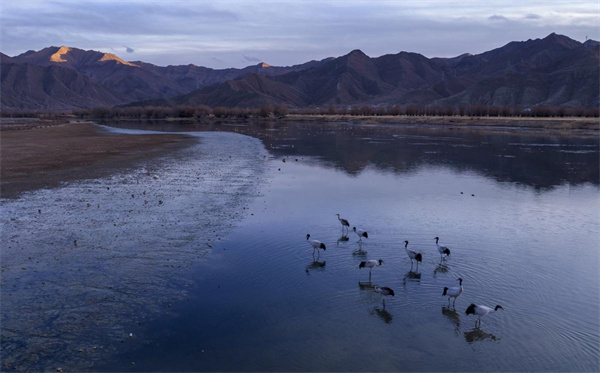
Black-necked cranes in a river in the Sandrubtse district of Shigatse, Xizang autonomous region. [Photo by Tadon/For chinadaily.com.cn]
To ensure the enhanced protection of black-necked cranes, the region has introduced specialized patrols to eliminate potential hazards and prevent poaching during their wintering period.
Moreover, multiple feeding points have been established in areas frequently visited by black-necked cranes, creating a sanctuary with abundant food and a safe environment. This attention to detail has contributed to a year-by-year increase in the crane population within the nature reserves.
The black-necked crane is ecologically significant, being the sole species among the 15 types of cranes worldwide that both breeds and winters in the plateau region. Among the nine crane species in China, it is the only one native to the country. Classified as a first-class protected wild animal, the black-necked crane serves as a prominent "benchmark" in the wetlands of the Qinghai-Tibet Plateau, playing a vital role in biodiversity conservation.
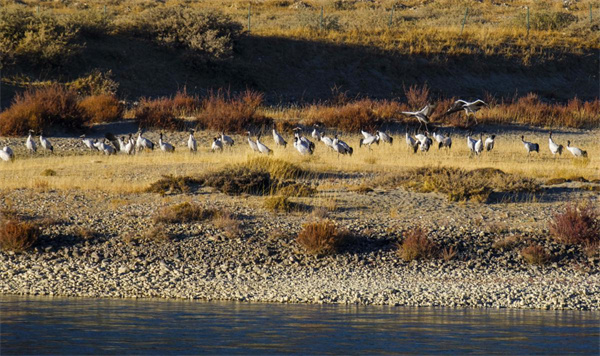
Black-necked cranes along the Kyichu River in Lhasa, capital of the Xizang autonomous region. [Photo by Tadon/For chinadaily.com.cn]
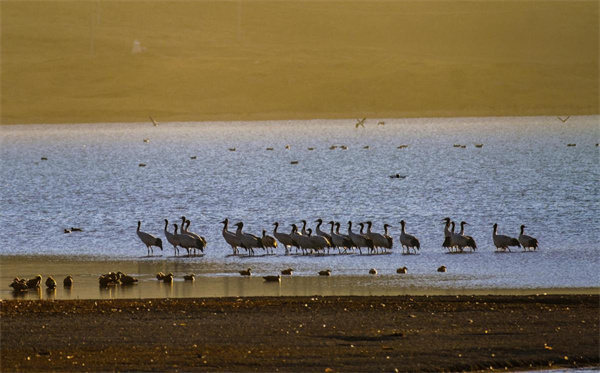
Black-necked cranes in a reservoir in Lhundrub county, Xizang autonomous region. [Photo by Tadon/For chinadaily.com.cn]
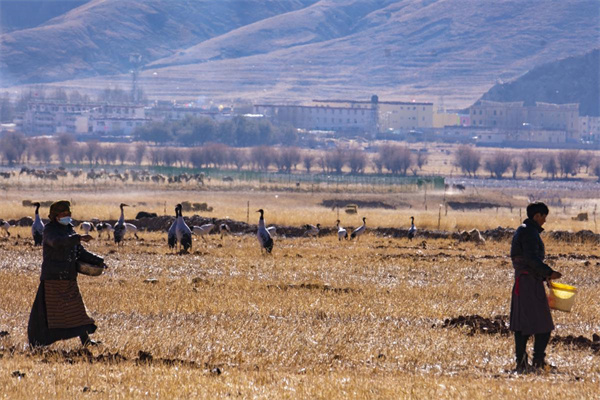
Wildlife rangers feed black-necked cranes in Lhundrub county, Xizang autonomous region. [Photo by Tadon/For chinadaily.com.cn]








